-
Posts
1,956 -
Joined
-
Last visited
Content Type
Profiles
Forums
Gallery
Events
Posts posted by tlevine
-
-
It has been a while since I posted an update but not for inactivity in the workshop. Once the hull was faired, I installed the upper deck clamps. These were made from beech because of its flexibility. This was also a good time to make the upper deck beams. They have a 6" roundup. Only the beams under the deck openings will be visible so these were made from costello; the rest were make from ply. Two of the beams were temporarily installed to prevent rotation of the hull.
As mentioned previously, I plan on having the gratings for the hatches removable. The lower deck waterway was installed next. Although the ability so see details on the lower deck diminishes the further you get from the midline, I decided to install waterways and ceiling timbers. All of these were made in costello. However, because the inner hull will barely be seen, these planks were edge-bent rather than spiled. The apparent irregularity in the waterway of the first photo is an optical illusion, as it is not seen in the second photo.
I was preparing to install the transom and the counter timbers when nothing started to make sense. I double checked all of my measurements, both against the CAD drawing and the original plans and discovered that although I had done a beautiful job of fairing the outside of the hull, the tumblehome was too great by approximately 4". This left me two options: keep going and simply build a slightly inaccurate hull or laminate extra wood onto the bulkheads and start the fairing process again. The first option was unacceptable to me and so I spent another week undoing my error. The transom/counter timber assembly is next. The transom took only three attempts to get right. My initial attempt was the alarm bell informing me that the fairing was incorrect. My second attempt utilized a transom configuration from my CAD drawing; this was too small. Finally, I took an over-sized piece of basswood, installed it and shaped it based on the curvature of the hull. What I discovered was that the shape of the aft surface of the transom was almost identical to the shape from the CAD drawing. Two brass pins secure it to the backbone.
I installed the six counter timbers into slots in the aft bulkheads. Thread is tied between the ribbands to maintain the correct curvature. This will facilitate fabrication of the filler pieces.
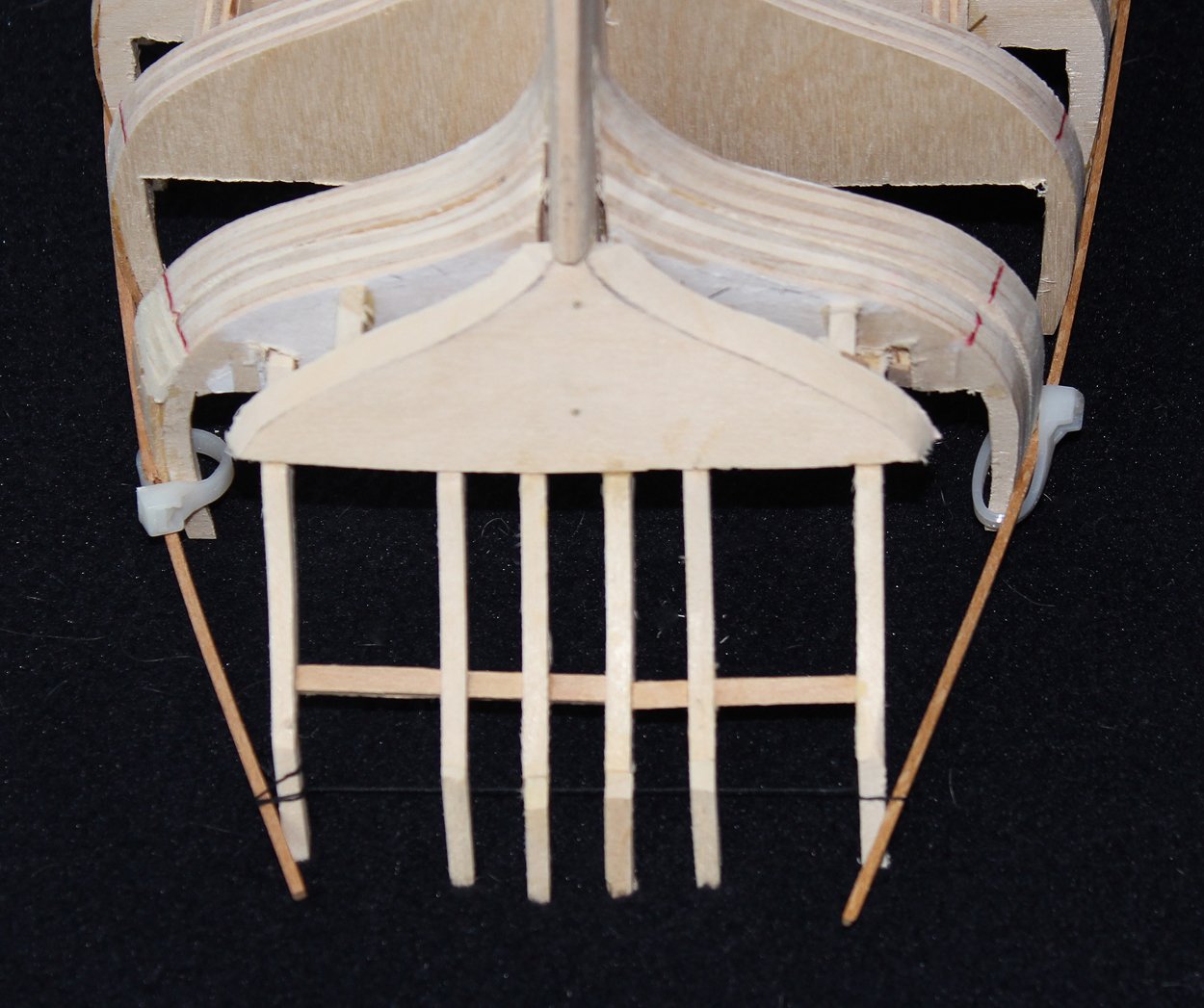
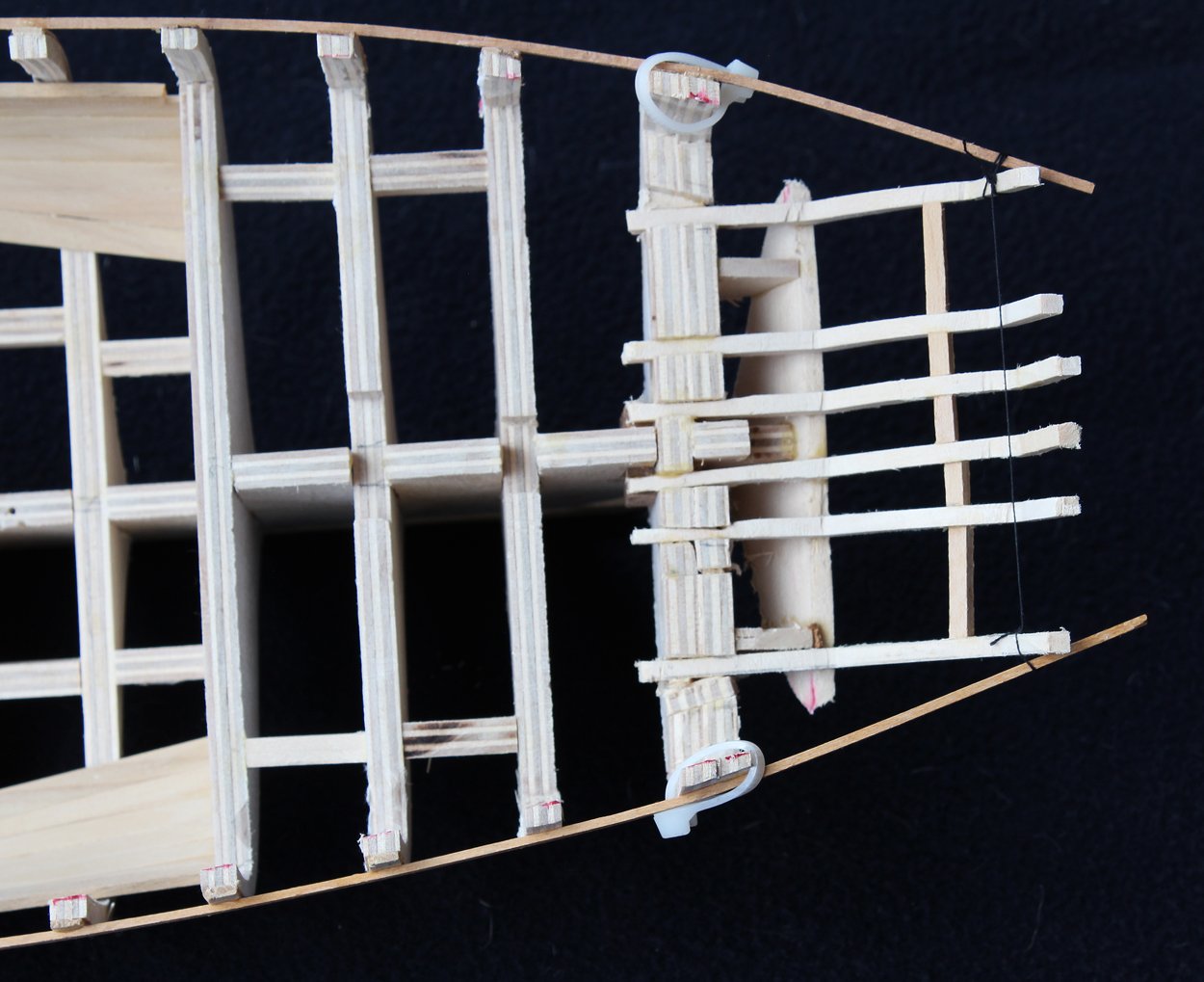
There is still some fairing to do on both sides but I will hold off on that until the lower deck is completed.
- KARAVOKIRIS, yvesvidal, Ondras71 and 22 others
-
 25
25
-
-
-
And here I am, looking at going to a warmer climate after retirement. Although this winter in Chicago has been unbelievably warm. Martin, I agree that you are stuck with casing the rigged models. However, If you are going to move them yourself, the enclosure can be made of pegboard or even cardboard. Many years ago I moved cross-country with three fully-rigged models in cases made of cardboard boxes. Aligned along the back seat of our Datsun they gave each other support and prevented tipping.
-
The figure head looks great. As far as moving the model, I took Atalanta from Chicago to Las Vegas and back for the 2018 Conference without any mishaps. Here is my suggestion... Make a building board which is a few inches wider and longer than the model. Take a look at mine for an example. Drill holes on either side and run wire through the holes and over the top rail (after protecting with with a towel). Tighten the wire and you're done.
- GrandpaPhil and Martin W
-
 2
2
-
This is a link to purchasing the framing plan for a Swan class ship from the Royal Museum Greenwich. This illustrates Druxey's comment that the frames are not all the same width.
-
Looks sweet, Dan. You will eventually use that same sanding disc on the tops of the bulkheads.
-
It has been a while since I updated the log but installing bulkheads and fairing a hull just is not very exciting. The fist step in permanently installing the bulkeads is making a building board. This will secure the keel so that the bulkheads (hopefully) will be installed plumb and square. I was able to reuse my building board from Atalanta and simply glued Swallow's waterline plan to the board. I secured two strips of wood on either side of the midline with oversize holes to that they could be snugged against the keel.
The bulkheads were cut from 1/4" basswood plywood. I plan on constructing the lower deck amidships so the center of bulkheads F through 14 only extend to the level of the lower deck. The other bulkheads extend to the upper deck.
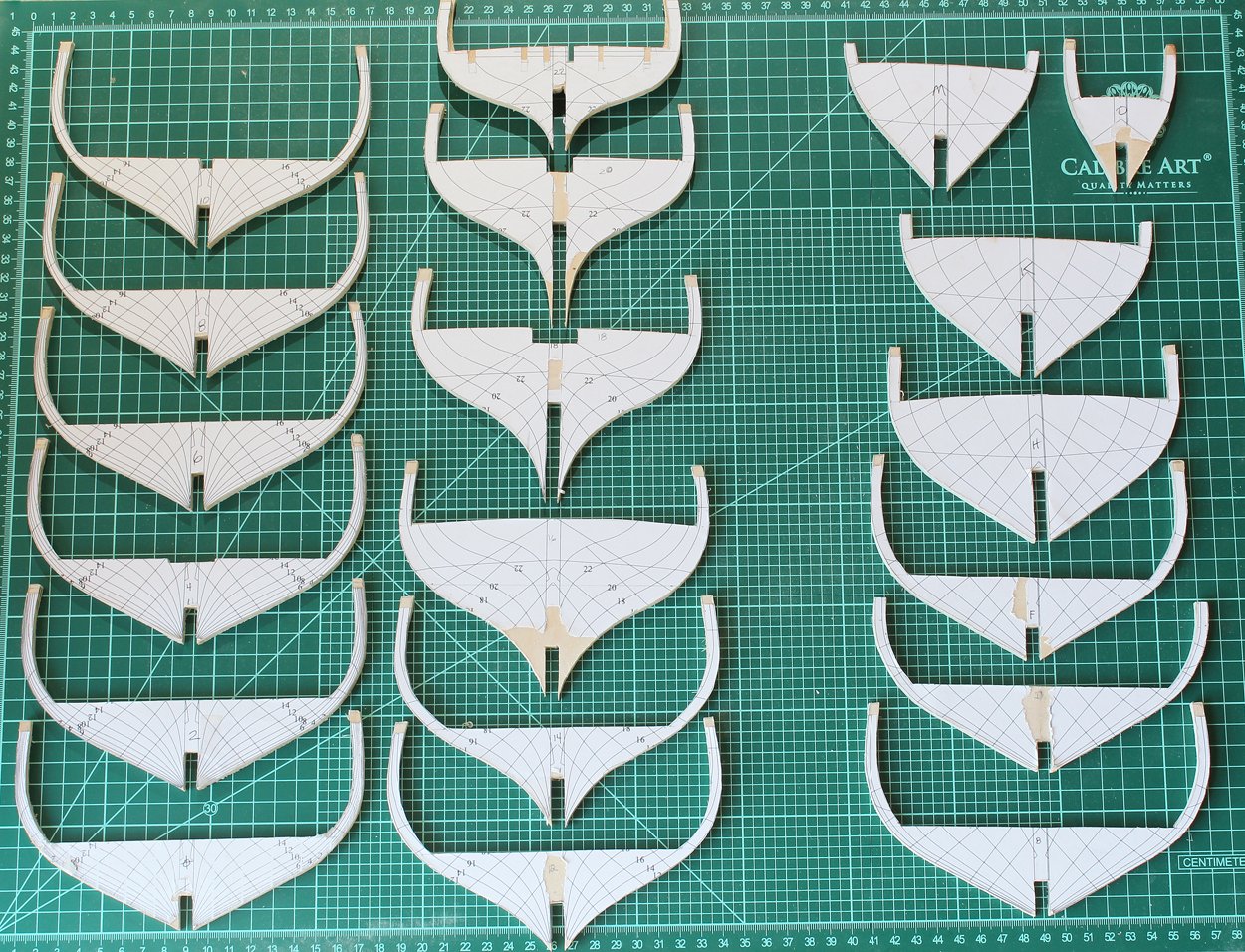
The bulkheads were installed using the same technique seen in the half hull project, clamping them to machinist squares. I also keep a small level on the bulkhead while the glue sets. This becomes most important with the bulkheads that only extend to the lower deck; there is only a narrow slot so it is easy to get them out of plumb. Once all the bulkheads were in place, spacers were installed to stiffen the hull in preparation for fairing.
I use a combination of techniques to fair the hull, including sanding discs on the Dremel, sanding blocks and files. One thing which is very helpful for the concave surfaces in the stern is rolling sandpaper around one of the rubber sleeves from my spindle sander. Before I owned the spindle sander I would use a shot glass. The key in fairing a hull is taking a lot of breaks. It is too easy (for me at least) to remove too much wood otherwise. On this hull you can see a few places that happened. Those spots were built back up with strips of walnut from the scrap bin. One techniqe I use to check for a fair run is to take strips of masking tape and run them along the hull. Another useful technique is to run a marker along the bulkhead. As the hull approaches fair, the marker is gradually sanded away.
At this point I am reasonably satisfied with the shape of the hull. Several of the spacers become loose during the fairing process. Rather than replacing them, I ran a ribband along the hull, gluing it in place and then securing it more with zip ties. The red marks represent the wale and the bottom of the rail. The plans show the gunports extending to the rail but the model shows an additional row of planking above the ports. I have not decided which direction to go at this point. Neither the plans nor the model are "as built" and it was common to add the extra row of planking to help protect the crew.
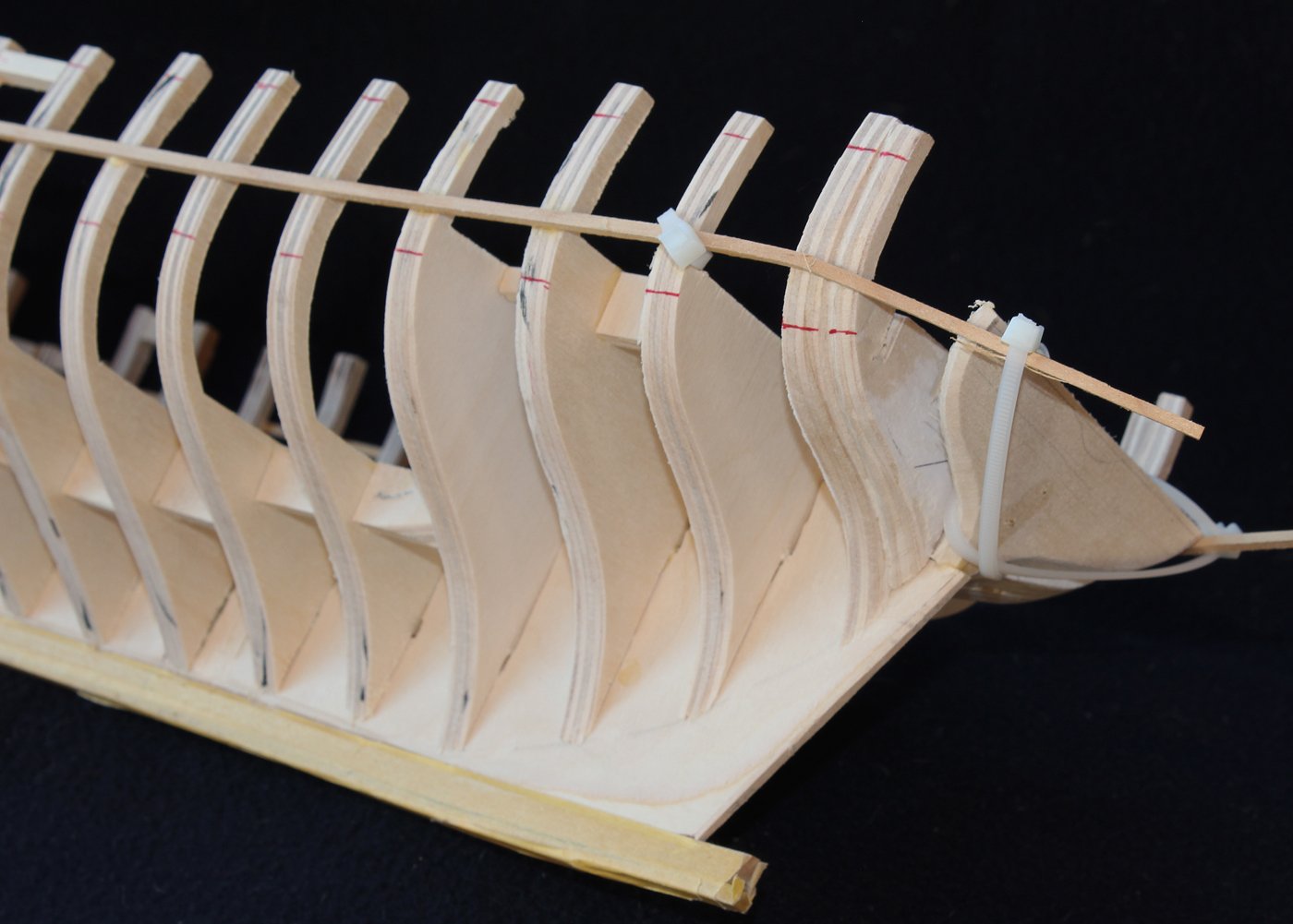
- oneslim, RichardG, KARAVOKIRIS and 23 others
-
 26
26
-
-
Doug, any problems will be taken care of with the fairing. Did you apply glue to the part of the frame that touches the plan? That, along with gluing the mating surfaces of the wood, should hold it until you install the filler piece.
-
This is a kit for beginners and intermediate builders. I designed this kit so almost anyone with a little patience and a few common hand tools could complete it. The only power tools I used was a Dremel but it was not necessary. Yes, it is also a scale planking kit. The ship itself is fictitious but the kit is designed as 1:48 scale. This scale is larger than the "typical" kit scale of 1:96 or 1:72. The larger scale makes it easier to install planks that are the correct width and thickness.
- Ryland Craze, Blue Pilot, kurtvd19 and 1 other
-
 4
4
-
Thanks for all the likes. Mike, I plan on making the cradle. Gregory, the nuns never taught me that relationship...and they were Franciscans.
- greenstone and FriedClams
-
 2
2
-
Jan, thanks for the reference. You are right, the head looks much more like the model, although the model had a figurehead instead of a fiddle head. Zephyr shares the same capstan location as seen on the plans for Swallow (neither of which agree with the model) and there are no gun ports on the transom. I struggled with the whole issue of accuracy for several months before deciding to forge ahead with the project. I guess at this point you could say that I am modeling the plan with the addition of a ladderway (and possibly a companion) and only twelve swivel guns but using the model as inspiration.
- Chuck, paulsutcliffe, Edwardkenway and 7 others
-
 10
10
-
Jaager, I hope I do not need too much luck but I am happy to accept good fortune. Seriously, I have not looked at Le Cerf. At one point I toyed with the idea of opening up the midships on one side and installing "real" frames rather than bulkheads, showing the frame notches. I am still thinking about it but do not have to make a final decision for a while since I plan on completing the lower deck before starting planking.
- FriedClams, Martin W and mtaylor
-
 3
3
-
I agree, Greg. That cradle adds a lot to the model.
I am using 1/4" basswood plywood for the backbone and bulkheads. The thickness will result in a stronger structure and will give a better gluing surface for the planking. The backbone is made from three pieces and the joints are supported with a strip of scrap. You can see the section between stations F and 16 that will have the lower deck completed. To make cutting the rabbet easier, the upper part was sanded into the backbone before the keel/stem assembly was added. At station O, the angle of the rabbet gradually increases from 45 degrees to 90 degrees and the width therefore becomes more narrow. Just below station FP, where the angle is 90 degrees, the entire width of the rabbet is on the stem.
The keel, stem and sternpost are made from costello boxwood. The false keel is pear. The width of the keel is 10.5" based on the RMG plan. This is narrower than the 12.5" dictated in the Establishments but this difference most likely is because Swallow was designed as a merchant cutter, not a military sloop. I do not have any pictures showing the construction sequence, but it is straight forward. The keel was made from three pieces, scarfed together and secured with six bolts. Black paper was inserted into the joints to simulate felt. A 45 degree bevel was cut into the keel from station 14 going forward for the rabbet. Aft of station 14, the deadwood starts and the angle changes. The plan does not show structural details for the stem and I was unable to determine the structure from the model. Based on other ships of this size and era I came up what I feel is a reasonable guess. The width of the stem is 12" at the head, diminishing to 8" at the keel. These joints also have black paper to represent felt. Brass wire was inserted through the inner part of the stem to secure the pieces together. The pictures show the stem before the rabbet was cut. The bottom of the keel is curved fore and aft. In order to keep the hull stable on the building board, I added scrap basswood to the bottom of the false keel.
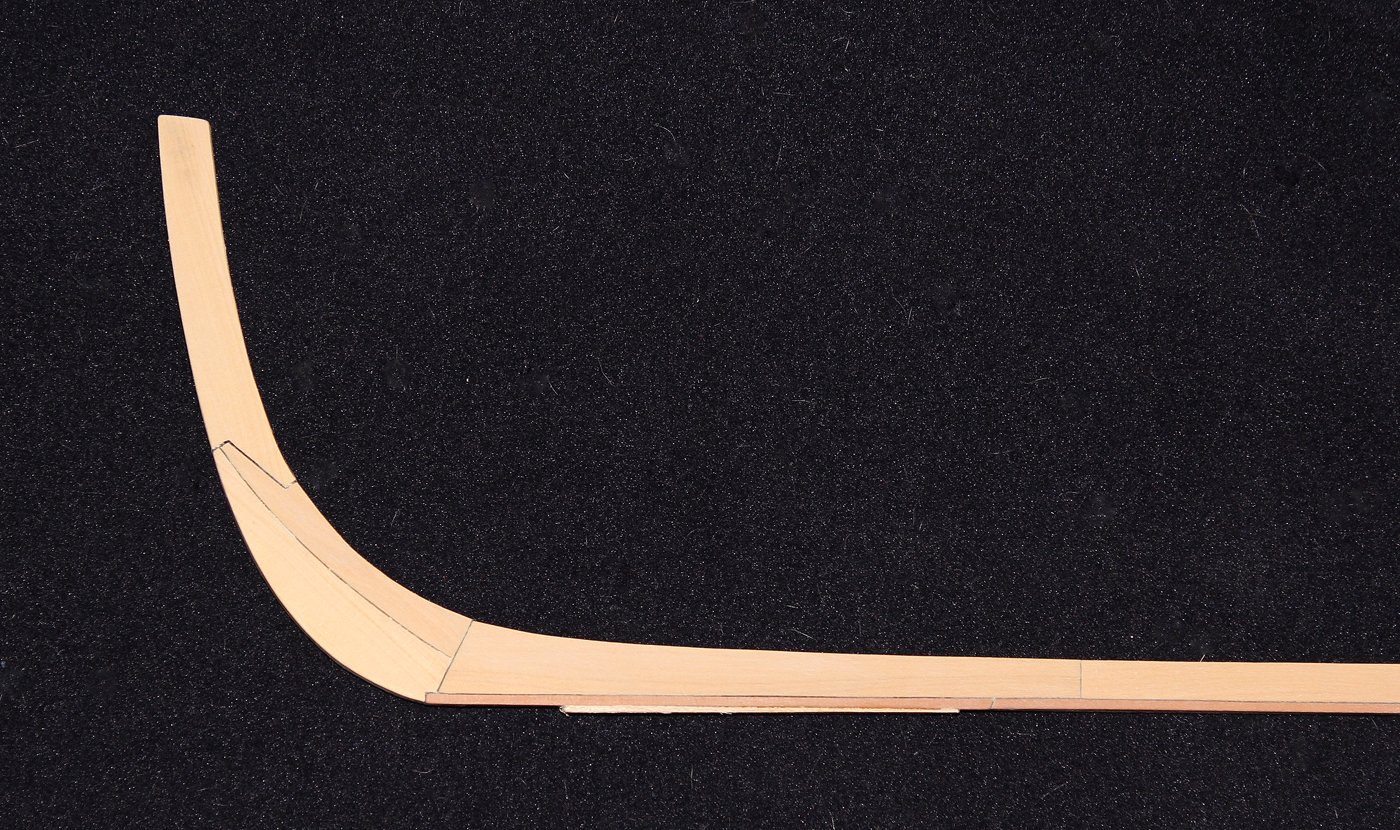
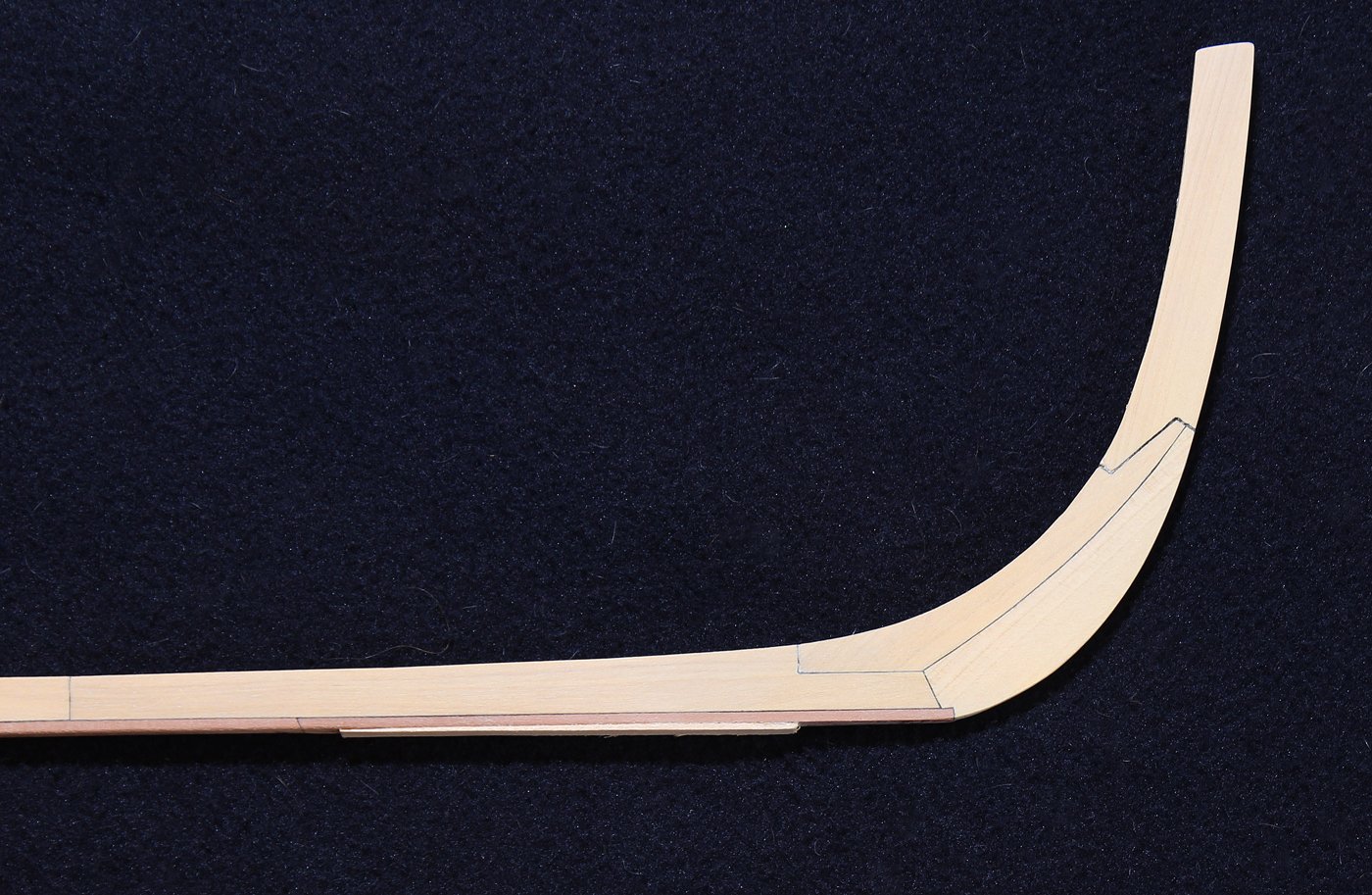
The photo shows a test fit between the backbone and the keel/stem assembly.
Although this picture is taken out of sequence, it shows how the keel and stem were bolted together.
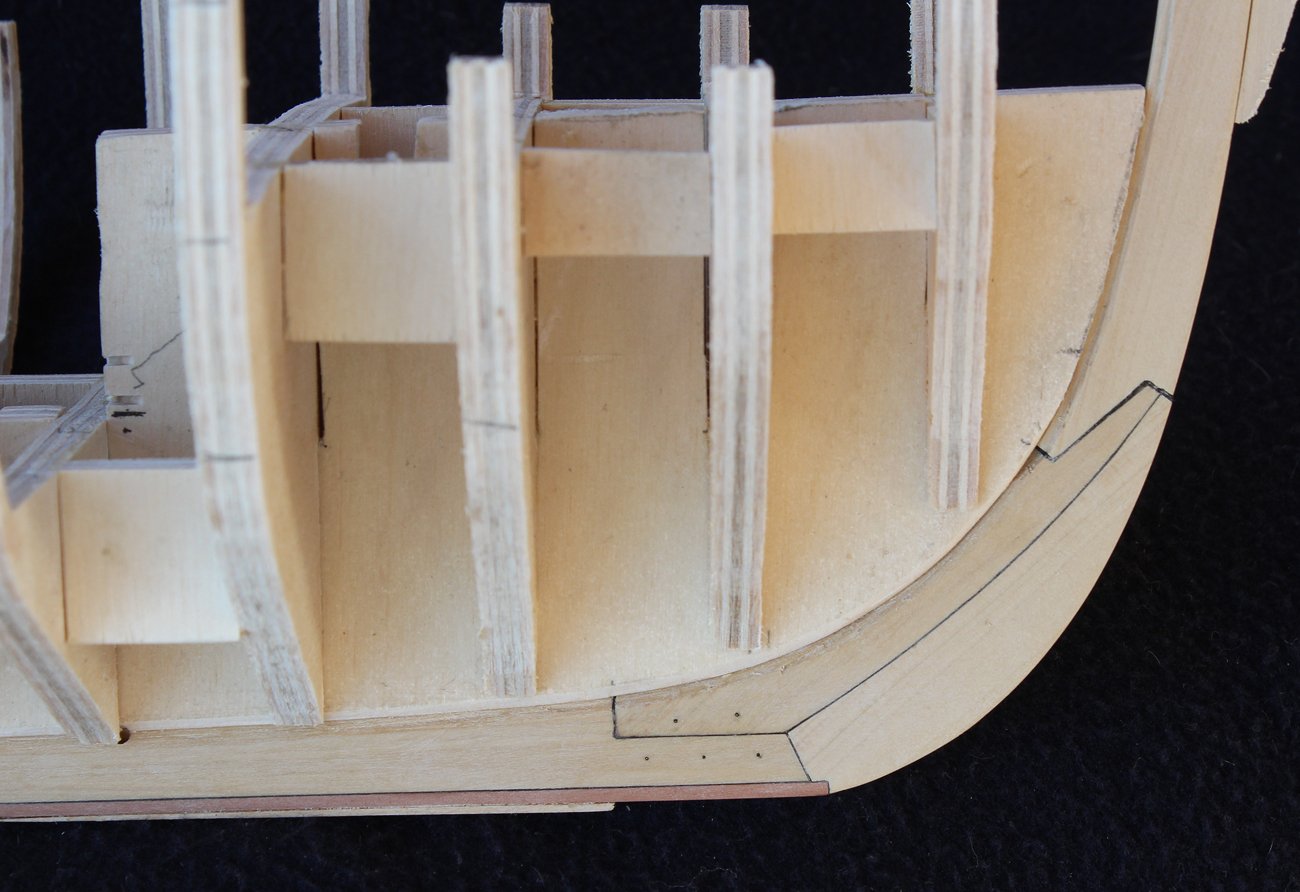
-
Agree with you 100% Dan. I plan on adding fillers in the bow and stern areas to facilitate planking.
- mtaylor, FriedClams and Elijah
-
 3
3
-
-
A few years ago, I was looking at some of the models posted on the RMG website and came across Swallow 1779. I instantly was attracted to her overall appearance and the fact that she was clinker-planked. The model is listed as SLR0540 and the plans are ZAZ4719.
-Warship-Brig-Sloop-14-guns-0a.jpg.e3f885d62571cfd7901348984918a400.jpg)
-Warship-Brig-Sloop-14-guns-1a.jpg.b44bc9297c470b4b90d66c3e240c9029.jpg)
Swallow did not have a long career. According to Rif Winfield, in his book “British Warships in the Age of Sail 1714-1792”, she was purchased on the stocks in 1779 and was originally designed to be a cutter. On the sheer plan one can see where the original mast (located at the dead flat) was erased from the plan. She was registered as a sloop and originally carried fourteen 4pdr guns. The following year, four 18pdr carronades were added. There is no mention of swivel guns, although the plan shows mountings for twenty-two of them. With Lively, Swallow captured the US privateer Black Prince in 1779. She was coppered in 1780 and on August 26, 1781,, Swallow was run ashore and burnt to avoid capture by US privateers off Long Island.
The first order of business was to develop a set of plans. Comparing the plans with the model revealed several inconsistencies. Starting at the bow, the model has a much larger stem with cheeks, rails, a false rail and a figurehead. The bowsprit come out of the hull in the midline. The plans show a simple stem and the bowsprit exits the hull to the port side of the stem. The model shows the capstan at midships but the plan has it aft of the main mast. The locations of the various hatch covers also differ between the model and the plan. There is a difference in the deadeye configurations and the swivel guns are not modeled. Finally, although the gold detailing is stunning, this little boat certainly would have never been decorated in other but the simplest schema. To make things even more confusing, in small print on the plan is the following..."a copy of this was given to Mr. Ladd for finishing two cutters the Board bought of him when half built 9 Feb? 1779". And, yes, the question mark was in the sentence as written. So the plan is actually the proposal for finishing and not as-finished.
I had to decide whether I was going to model a model or model a ship. Because the model is most likely a presentation piece, I decided to use the plans layout rather than the model's. This still left me with concerns. The biggest one was whether to model the swivels. Since the model does not show them and Winfield does not mention them, I decided to leave them off. There is also no "proper" access to the lower deck on the plan but a companionway is visible on the model. I have added a ladder and companionway. If any of you have additional information or insights to the contrary, please let me know. Things are easy to change at this point.
This was going to be a plank on bulkhead model. My reason for this construction style was that the beauty of this ship will be in the clinker planking; therefore, both sides of the hull will be completely planked. I will be installing the lower deck and its associated fittings in the mid-ships area as I plan on making the hatch covers removable. Plans were developed using the tutorial written by Wayne Kempson which is found in the Modeler’s Database.
http://modelshipworldforum.com/resources/plans_and_research/DraftingShipPlansInCADwayne.pdf TurboCAD 18 was my CAD program.
Once the plans were developed I made a half hull in 1:96 scale to make sure that I did not have any glaring errors in my rendering.
-
-
Looks great. Only the first run of kits have the bulkhead issue. Please remember that I have never designed anything before and what looks correct on paper (or CAD) does not always translate perfectly when dealing with a laser cutter and different versions of the same software. As soon as there are five builds started we will set up the group build.
- Blue Pilot, Heronguy and Canute
-
 3
3
-
The Board discussed your request again last night, Christian and Ed. We will not be offering the kit in a plans and manual only version. There were several issues raised but the most critical is the fact that this is aimed at the novice model builder. They would not be expected to have the necessary equipment and skill to be able to accurately cut out the components.
- AnobiumPunctatum, EJ_L, kurtvd19 and 4 others
-
 7
7
-
-
-


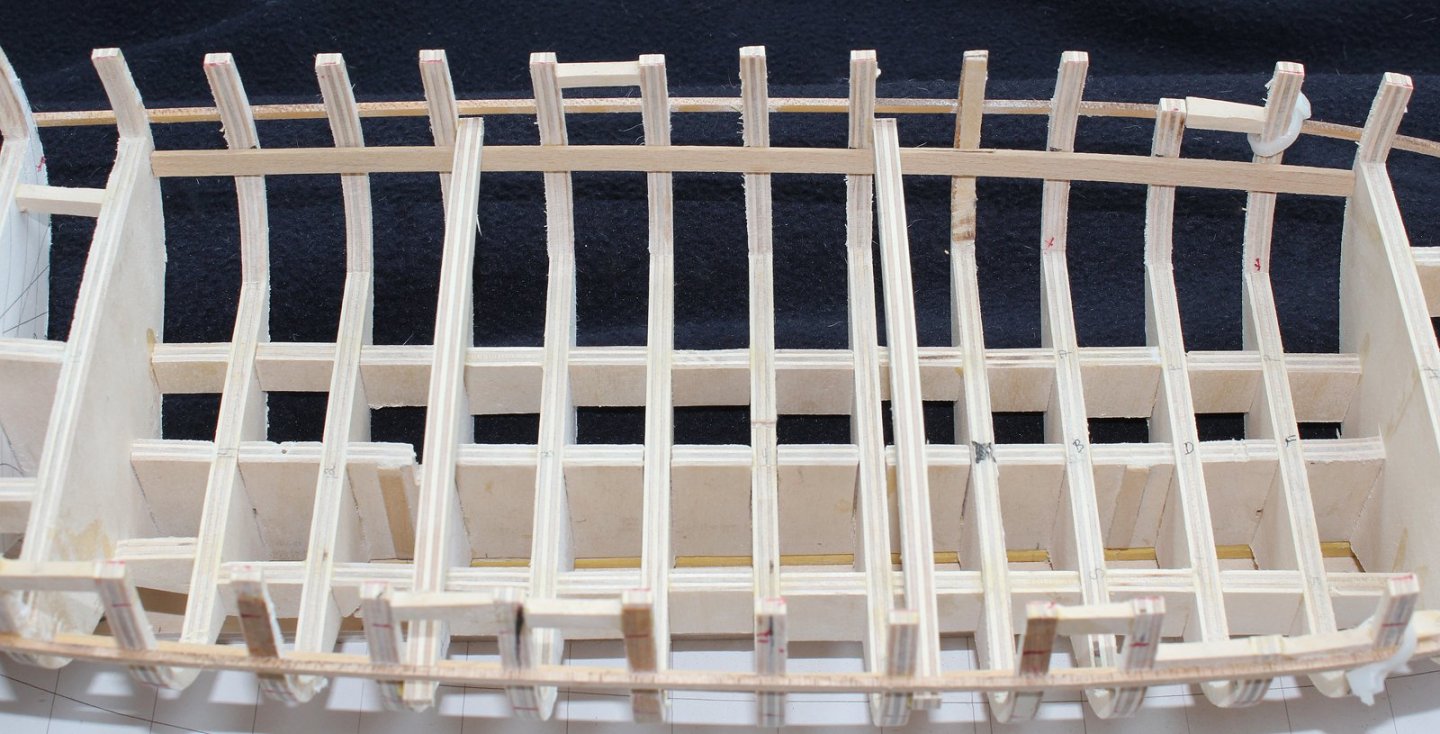
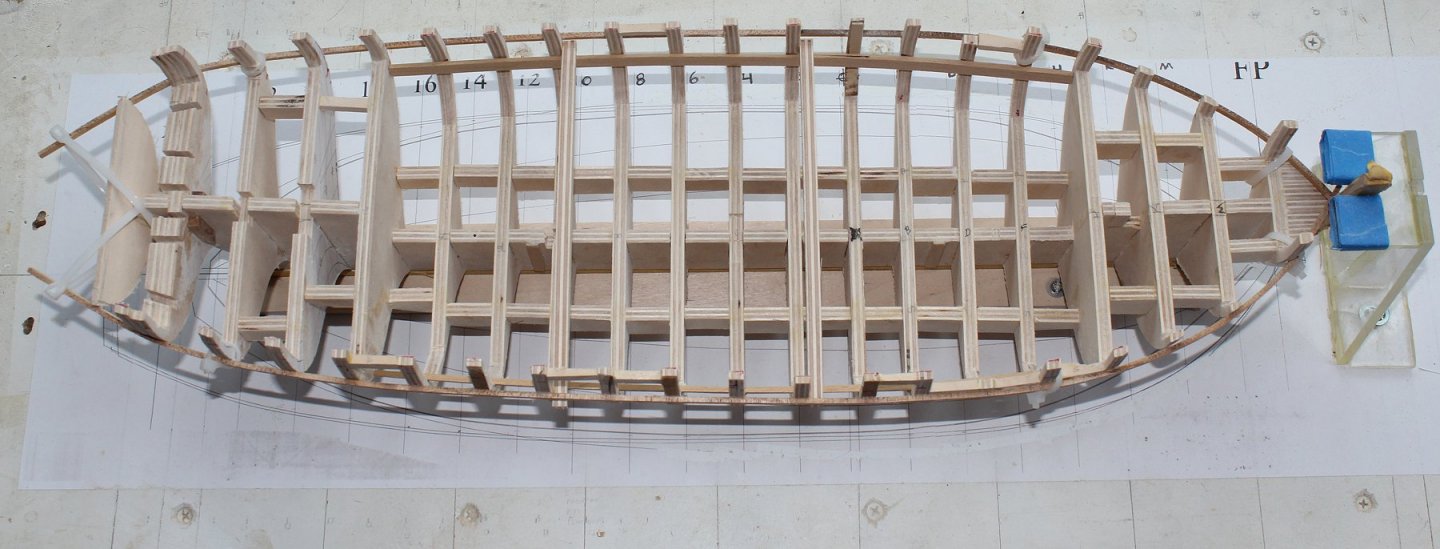

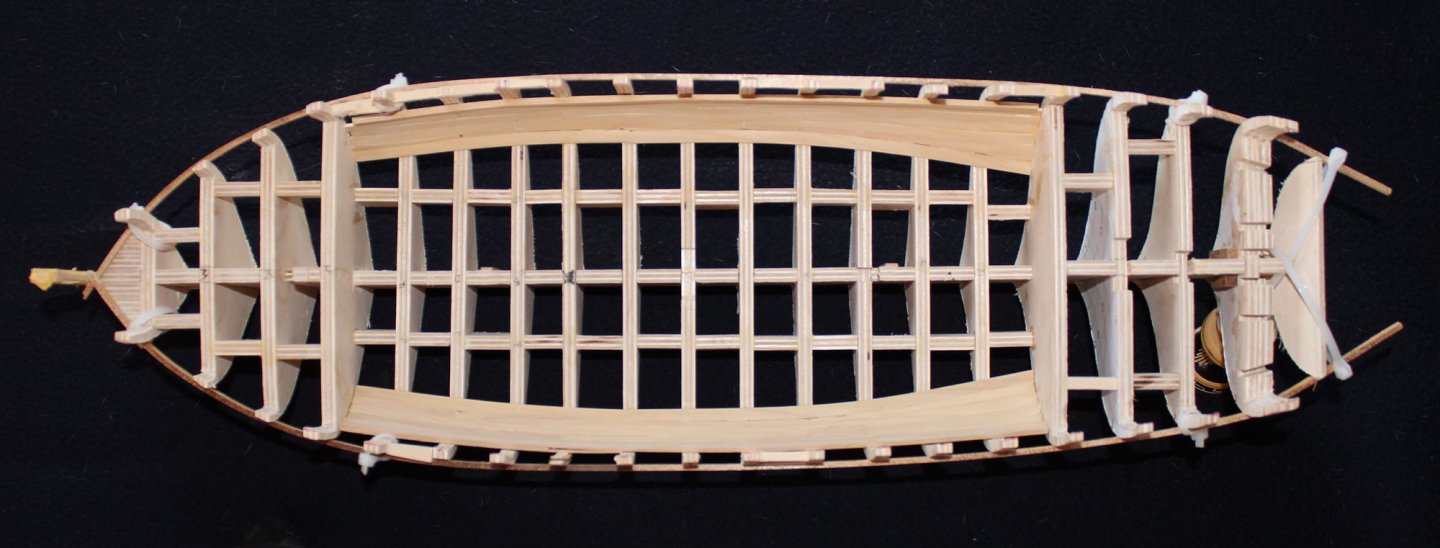
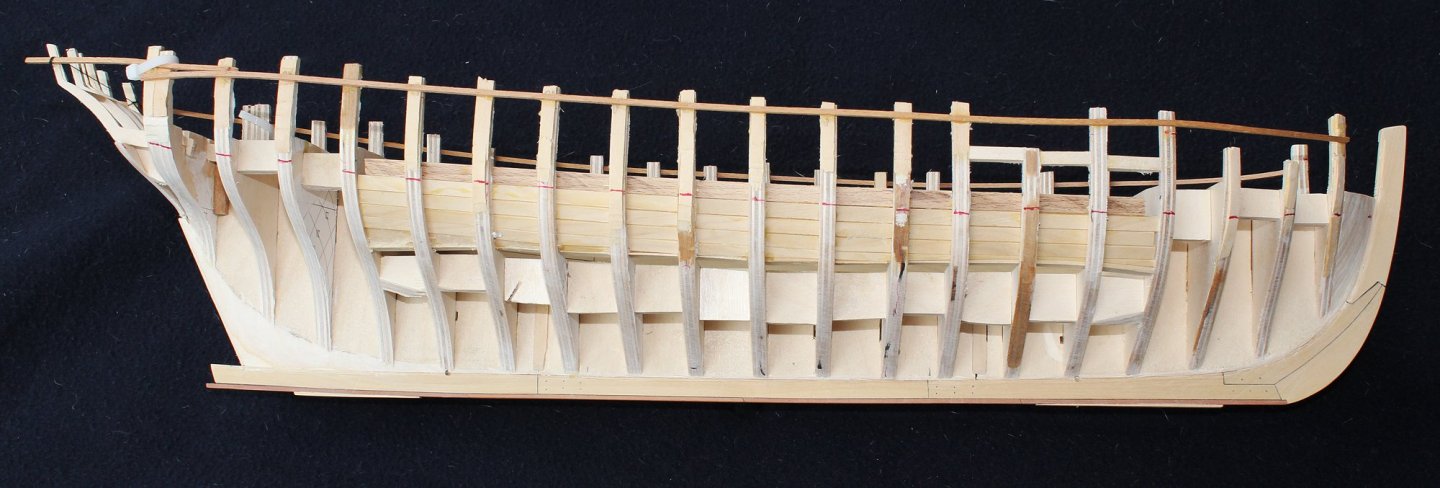
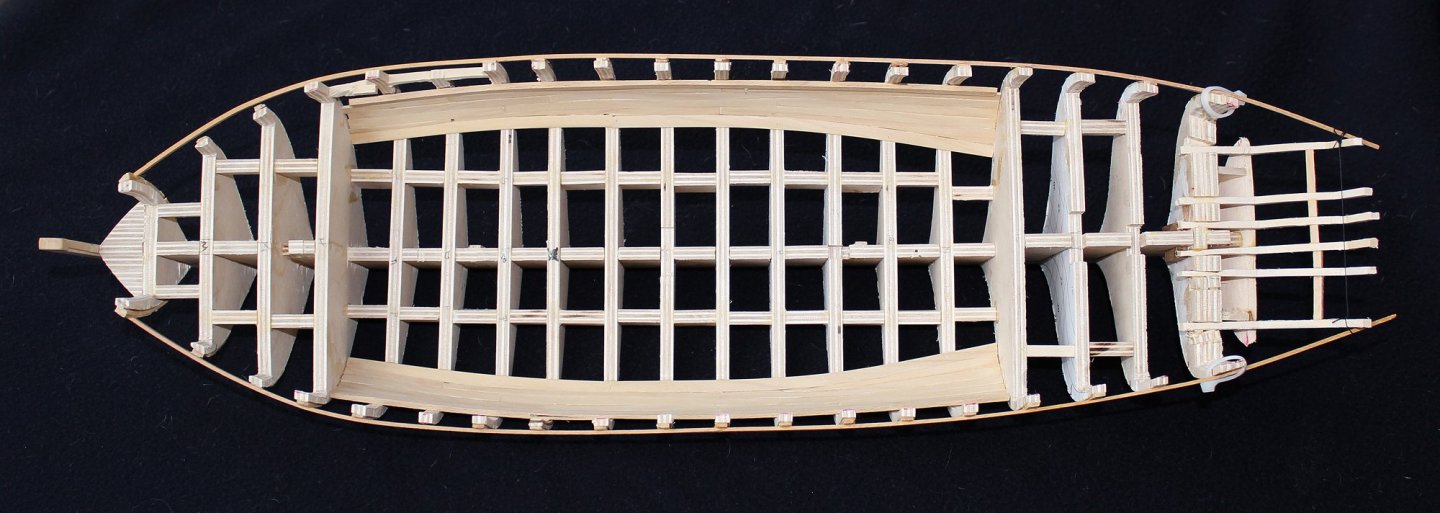
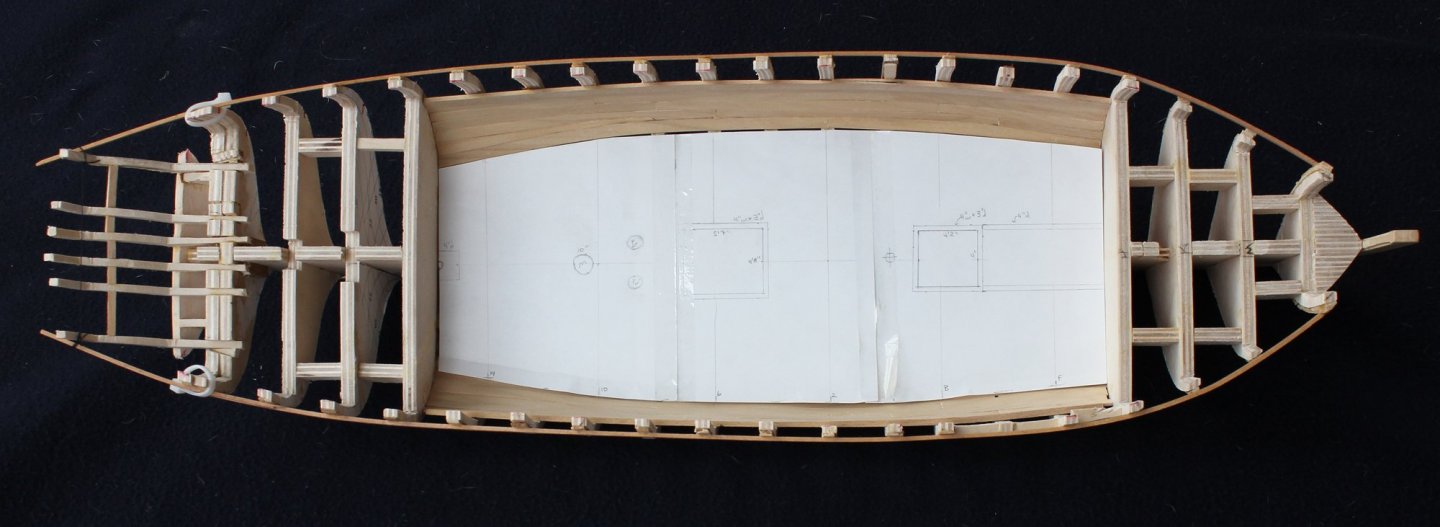
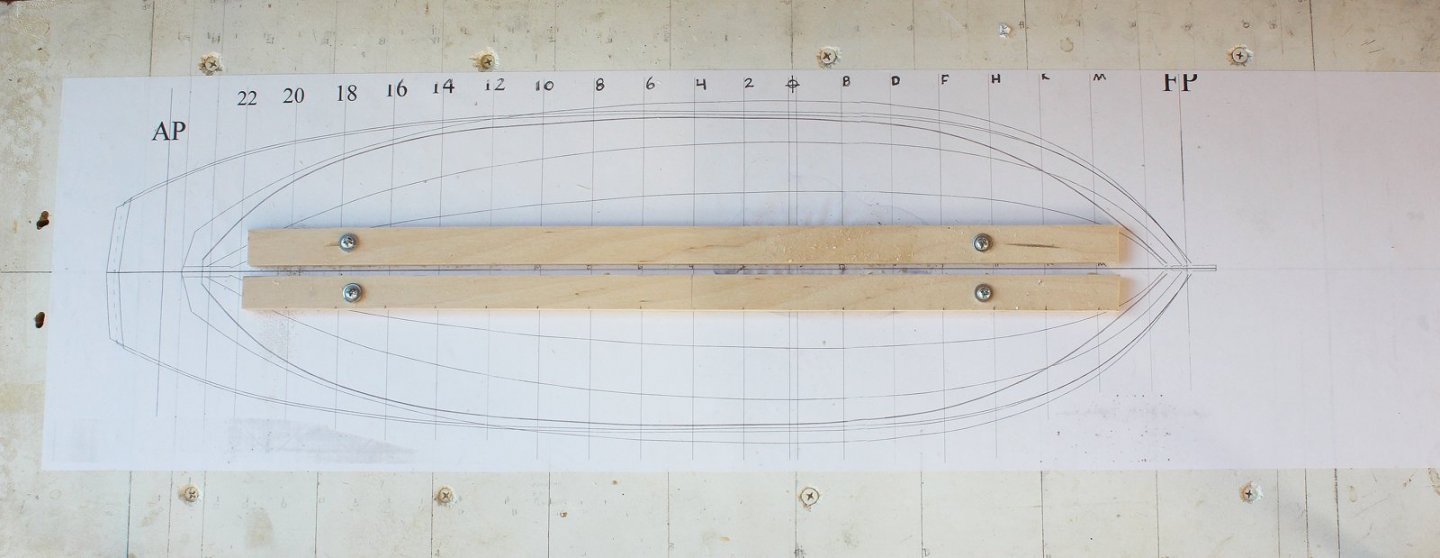

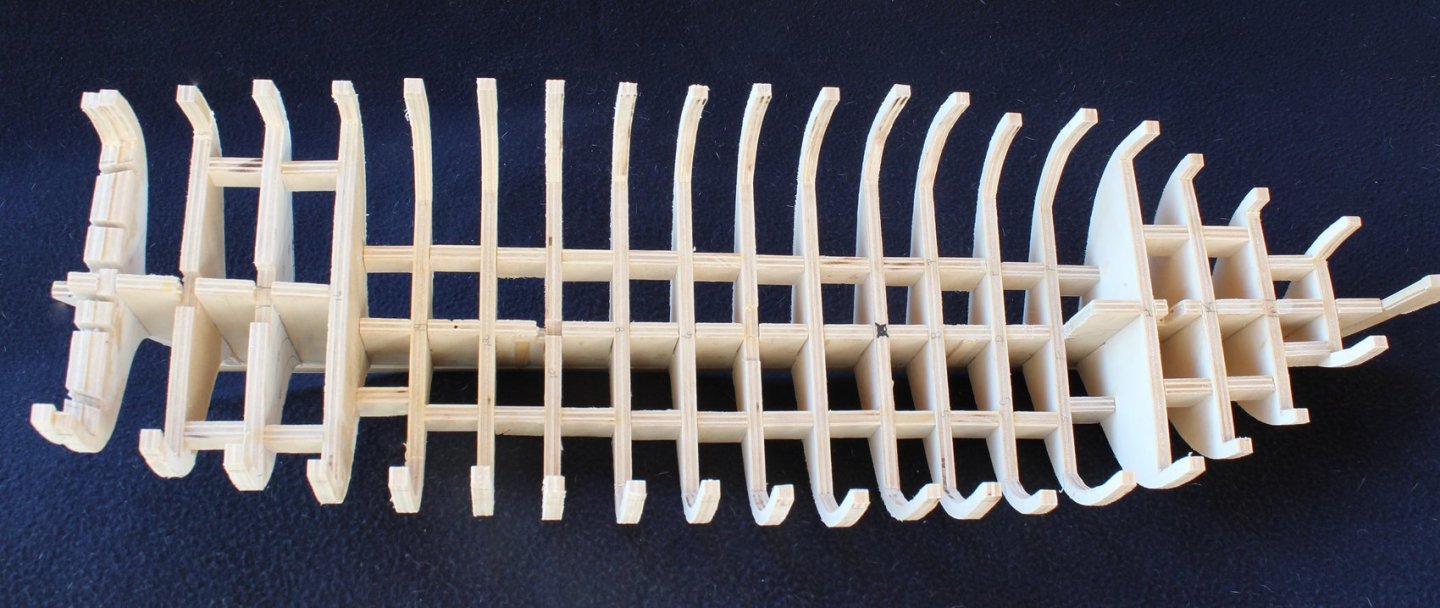
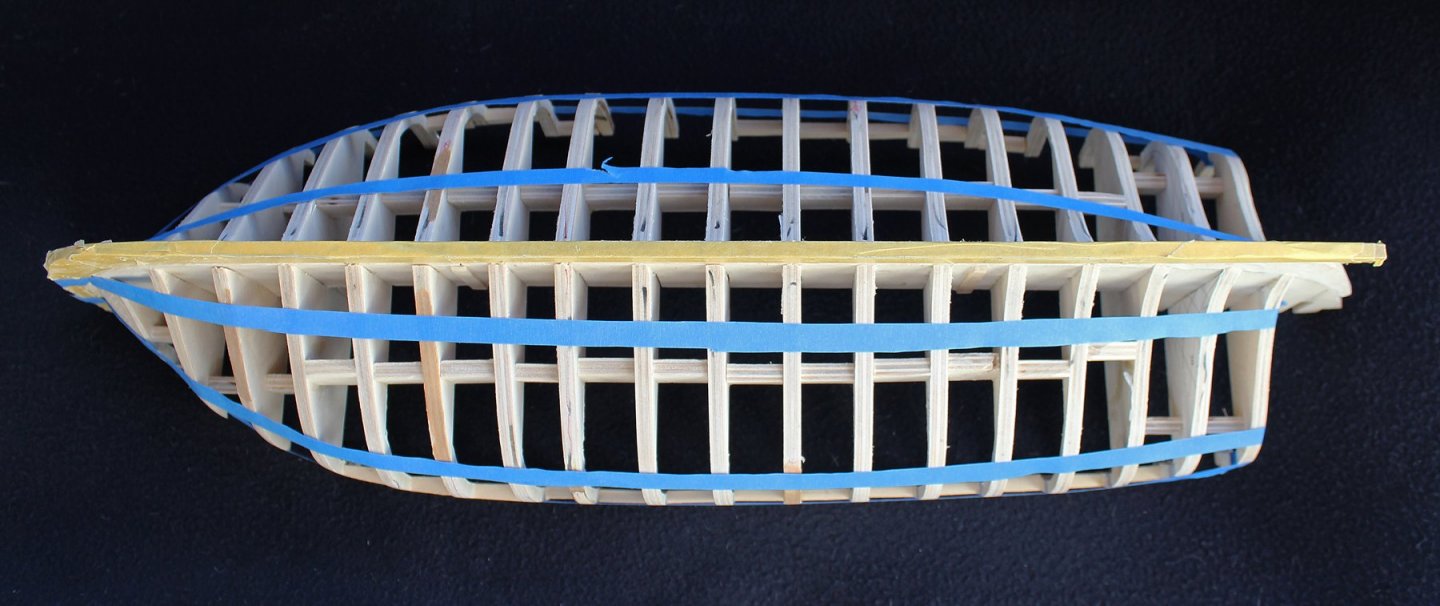
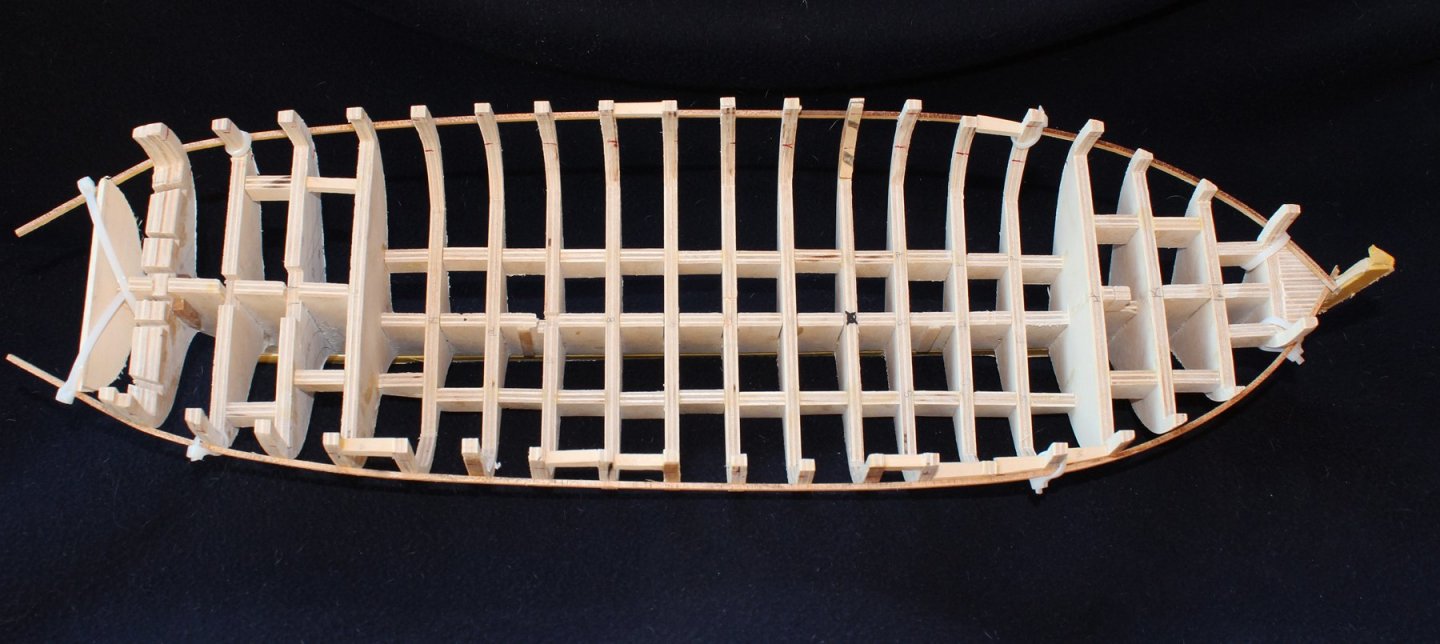
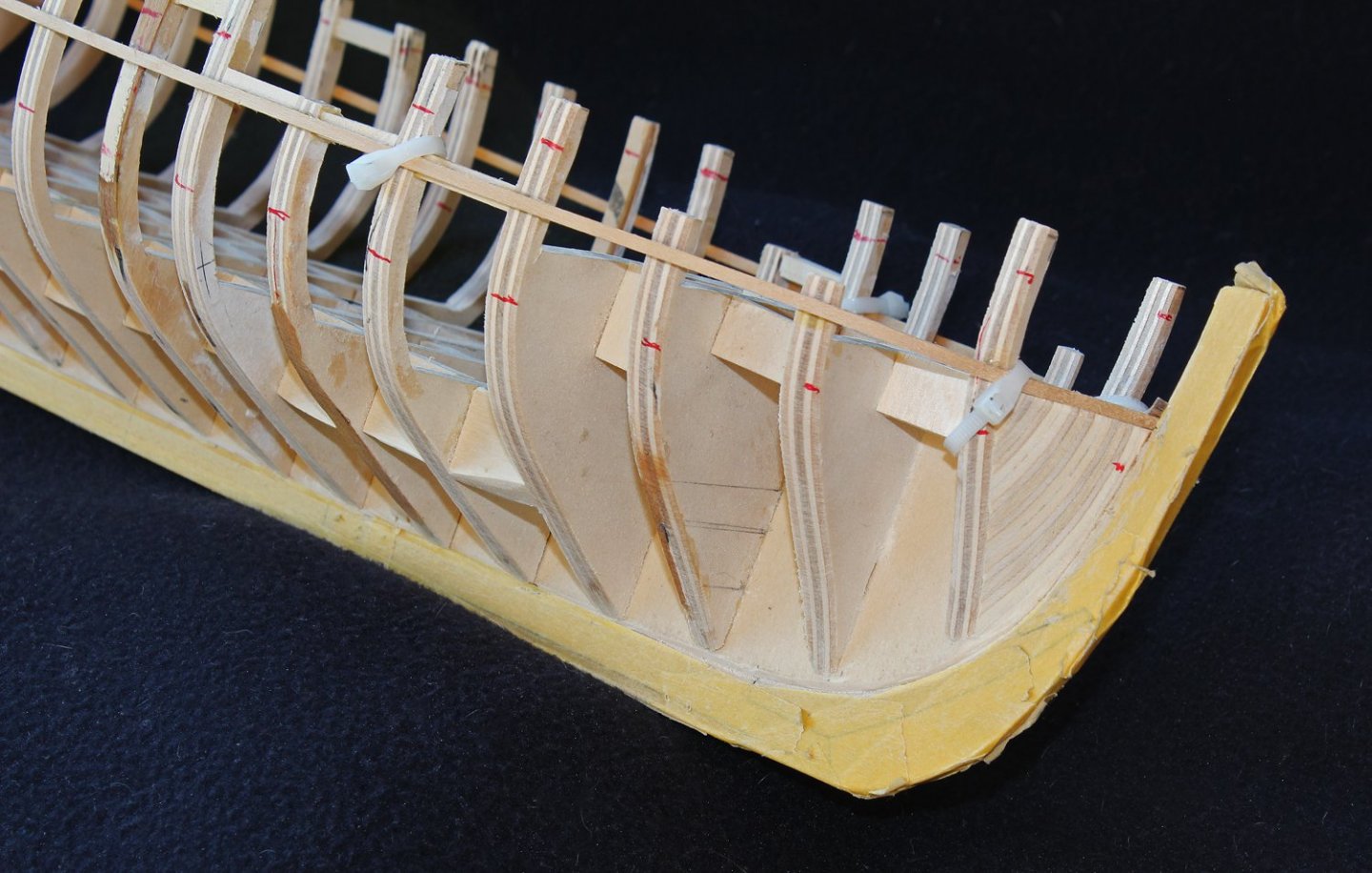
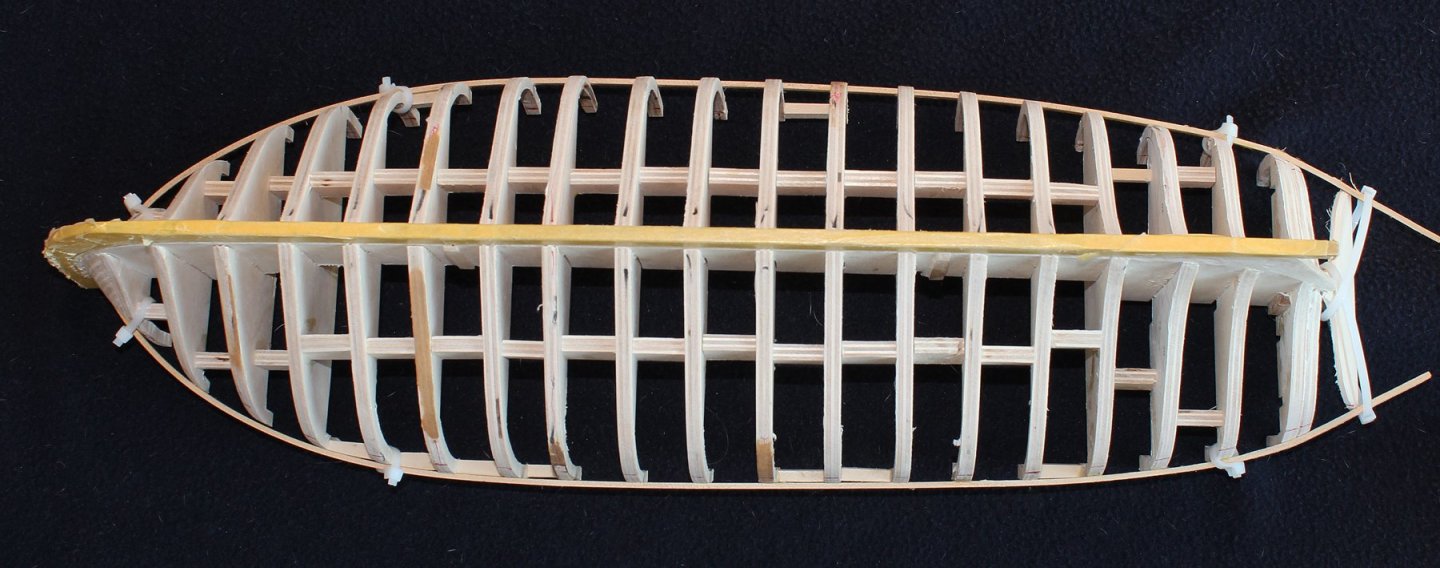
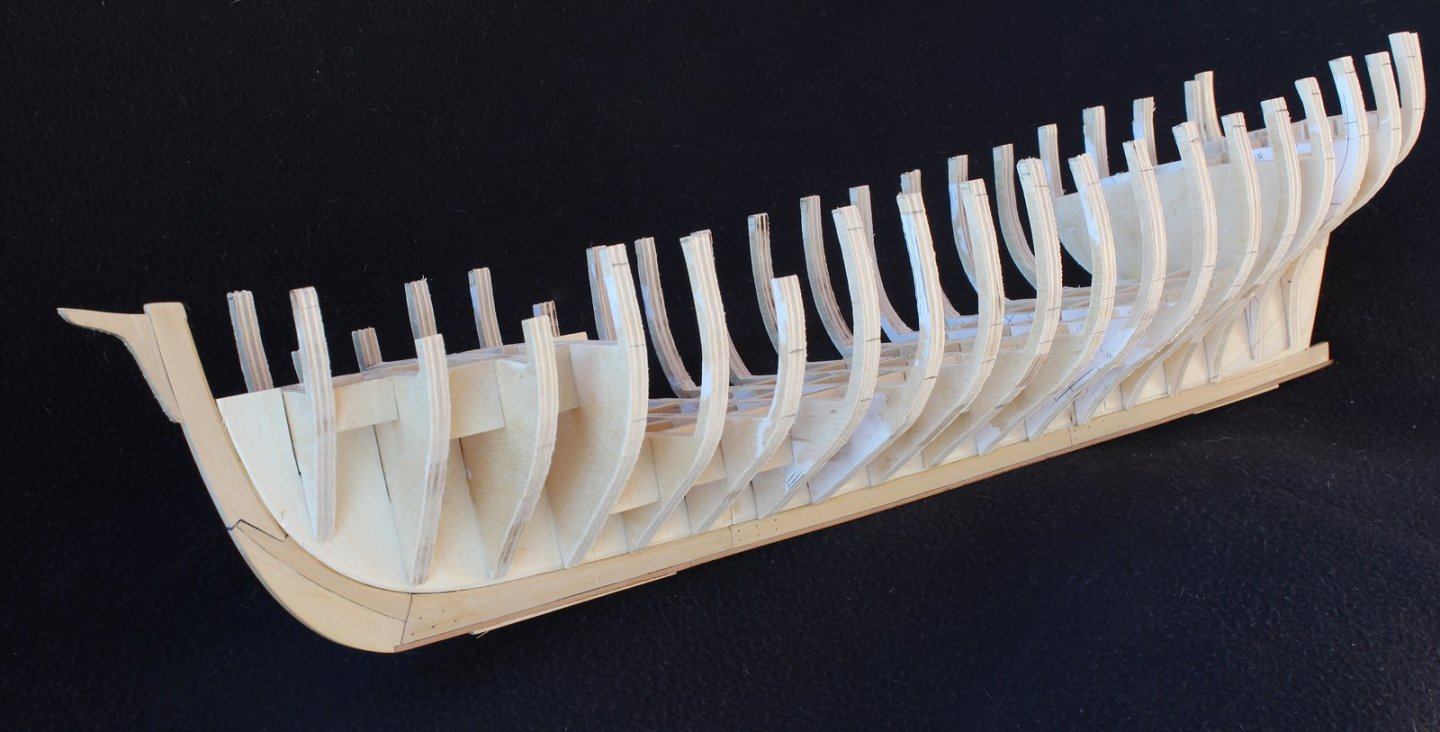




Half Hull Planking Project
in Planking Downloads and Tutorials and Videos
Posted
We all have those moments. We simply try to hide them!